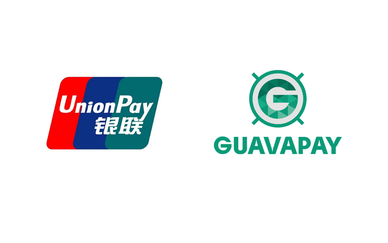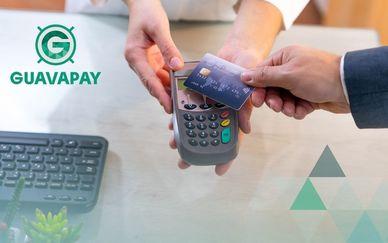Fintech propositions aim at speed, cost optimization, and convenience. Hence, 2022 is considered as the time that technologies brought forward by rapid digitalization will strengthen their position. Data-driven and digital propositions put in motion the Fintech sector, presenting powerful assets for financial optimization.
Let’s dive deeper into what digital innovations prevail and put in motion fintech and disrupt payments technology in 2022.
Embedded finance
54 percent of European business leaders stated they would explore embedded finance in the next year, focusing on embedded payments according to a report by OpenPayd.
Embedded finance is one of the crucial tools for elevating the customer experience. According to Yobota’s research, embedded finance products (44%) are all priorities for investment in 2022. Embedded finance is a rapidly growing landscape. The BaaS (Backend as a Service) technology used as the underlying technology for embedded finance is driving the innovative changes enabling banks and financial institutions for more comprehensive and agile service delivery.
Buy Now Pay Later was in the spotlight last year and is going to keep the trend as the range of products for BNPL purchase would objectively expand. As Yobota research states, 44% of banking and finance firms plan to invest in buy now, pay later, or other embedded finance solutions in 2022.
Open Banking
Research and Markets report states that the Open Banking adoption rate will have a rapid increase this year as the technology expands globally and mostly in Europe.
This growth is reasoned by the fact that open banking opens doors for previously unreachable markets, creating new business models and opportunities for financial inclusion.
Open Banking creates an extensive financial opportunity and potential to disrupt the financial services space. The technology drives accessibility and convergence in financial services enabling more optimized processes and growing exponentially as the benefits it provides the merchants, customers, and financial institutions outweigh the concerns on the data sharing.
For example, in the PWC report, as stated 18% of consumers are currently aware of the concept of Open Banking, now this figure will rise significantly to 64% by 2022. Financial management tools, tailor-made products induced by open banking technology a unique and integrated space enables for a more sophisticated approach, leveraging wide financial opportunities.
Cryptocurrency
In 2021 cryptocurrency changed its position of being treated as a high technology gig to a really valuable payment asset. 2021 was a prominent year for crypto since its value as a payment asset was appreciated by major payment networks such as Visa and Mastercard. The implementation of crypto payments into daily transactions was a serious and strongly supportive step in the wider adoption of crypto payments.
The perception of crypto as an investment and payment asset will also prevail in 2022, opening space for deeper development and stabilization of crypto. In 2022 regulation issues will take a stake regarding cryptocurrency. Regulators will show a more constructive and consistent approach leaving no place for ambiguity and controversial issues.
Blockchain
Blockchain has moved beyond the context of cryptocurrency and is widely used as a technology in different fields. The distributed ledger technology has gained recognition for its privacy, security, and high data management opportunities.
Blockchain connects global financial systems making them interoperable, flexible, efficient, affordable, and secure. In regards to this interconnected block nature, the transactions have their irreversible nature and prove to be secure and tamper-proof.
The lack of middlemen also provides the receiving party with direct access to the payment as soon as a transaction is recorded enabling it for faster and cheaper transactions.
Due to its nature blockchain is the driving force behind cross-border payments and settlements. According to Statista, In 2021, global spending on blockchain solutions is projected to reach 6.6 billion dollars. Forecasts suggest that spending on blockchain solutions will continue to grow in the coming years, reaching almost 19 billion U.S. dollars by 2024.
In 2021, cross-border payments and settlements were considered the largest individual blockchain technology use case, accounting for close to 16 percent of the global blockchain technology market.
A shift to all digital
Tech-savvy consumers like Gen Z impacted the rise of digital-only banks, by other worlds, virtual banks.
In 2021 after the pandemic situation drove the evolvement of digital banking and 2022 will stimulate its growth further. No need for physical interaction and visiting a brick-and-mortar bank allows leveraging digital banking solutions at a higher convenience for customers. API digital banking provides more sophisticated, agile, and flexible payment opportunities. Emarketer’s statistics states that by 2025, the UK’s cohort of digital-only banks—predominantly neobanks—will have captured more than half of the UK’s digital banking users, and almost 40% of adults overall.
Open Banking
Research and Markets report states that the Open Banking adoption rate is going to have a rapid increase this year, as the technology expands globally. This growth is reasoned by the fact that open banking opens doors for previously unreachable markets, creating new business models and opportunities for financial inclusion.
Open Banking creates an extensive financial opportunity and potential to disrupt the financial services space. The technology drives accessibility and convergence in financial services enabling more optimized processes, and grows exponentially as the benefits it provides the merchants, customers, and financial institutions outweigh the concerns on the data sharing.
For example, in the PWC report, it is stated that though only 18% of consumers are currently aware of what Open Banking means for them, now this figure is going to rise significantly to 64% by 2022. Financial management tools, tailor-made products induced by open banking technology a unique and integrated space enables for a more sophisticated approach, leveraging wide financial opportunities.
 Sign in
Sign in



